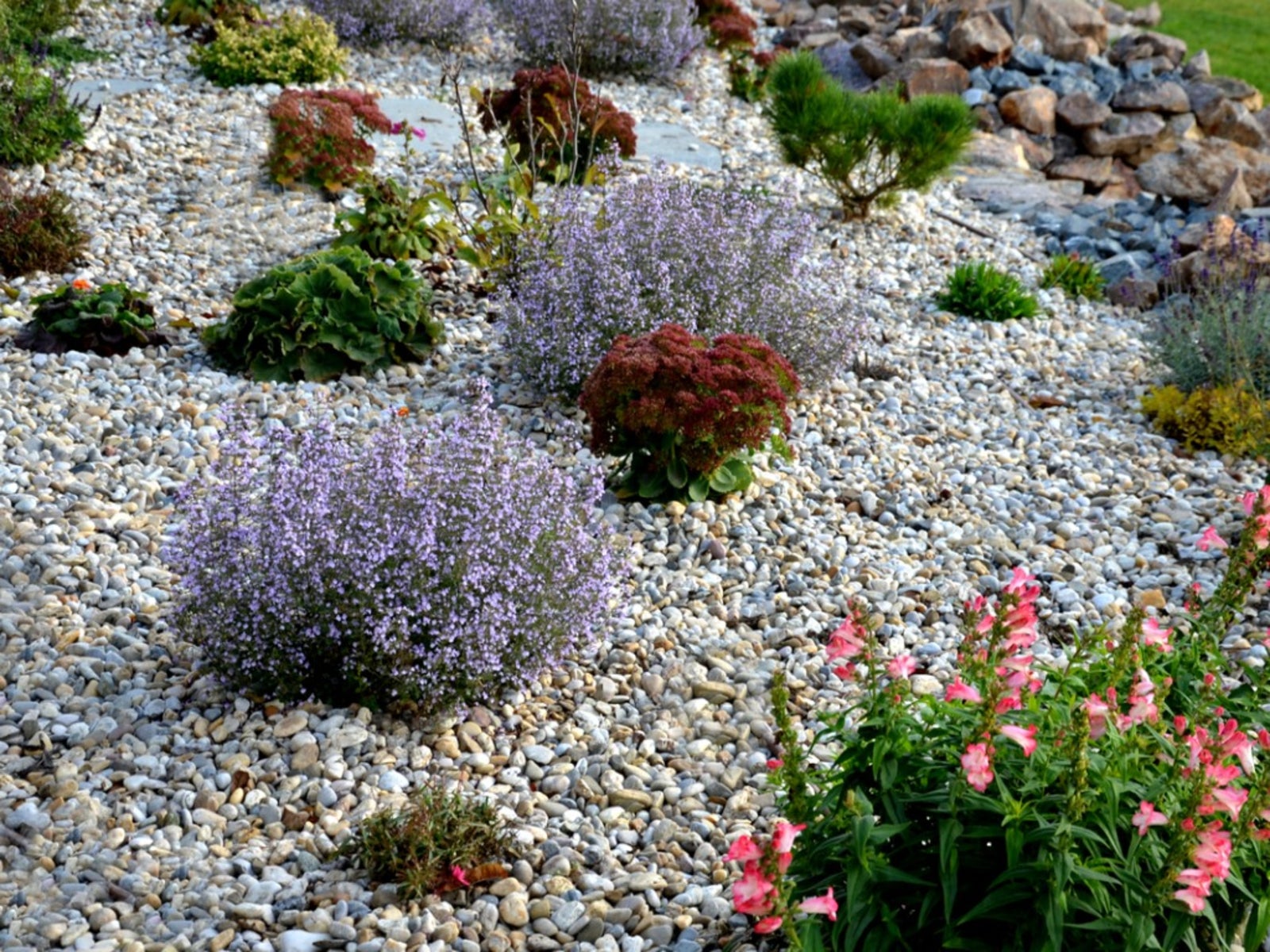Gravel Garden Plants - Learn How To Make A Gravel Garden


There are all kinds of creative solutions to landscape problems. Dry areas or spaces with natural dips in the topography benefit from gravel gardens. What is a gravel garden? These spaces are not only covered with gravel mulch but also host a variety of plants or even a pond. There is a wide range of gravel garden plants that combine hardiness with tolerance to diverse moisture levels. Some tips on how to make a gravel garden will have you on your way to enjoying a unique landscape filled with texture and color.
What is a Gravel Garden?
This type of garden concept is characterized by gravel mulch, but may also include trees, shrubs, groundcovers, flowers, larger rocks, and differently textured hardscape details. The best types of gravel garden plants are perennials, ornamental grasses, and herbs. The effect provides a Mediterranean style garden that is perfect for plants such as:
Some bulbs such as alliums and crocus will break through the gravel mulch and naturalize in clumps. Xeriscape plants work well in gravel gardens. These might include:
There are many ideas for a landscape gravel garden and suitable plants abound. Layout a plan before you start and choose gravel garden plants that will thrive in your lighting, moisture, and temperature situation.
Can a Garden Be Planted on Top of Gravel?
The curious gardener might ask, “Can a garden be planted on top of gravel?” It seems like it should not work due to the infertility of stone. The key is good soil preparation below the gravel surface. Dig the soil to a depth of at least 5 inches (13 cm.) and incorporate rotted organic material or compost. Ensure good drainage by working in fine sand, unless your soil is already porous. The soil needs extra nutrients and good drainage to prevent soggy roots and infertile conditions. Gravel mulch on top acts as a natural moisture conservator, but the stone will get hot in sunny areas and some water will evaporate. Consider this when choosing gravel garden plants. Install perennials and herbs in clumps to maximize their visual appeal. Put vertical specimen plants as focal points in the center or just off-center. Low growing plants work well to outline a natural-looking path through the gravel garden.
Ideas for a Landscape Gravel Garden
You can design any shape or size of a gravel garden. The area should fit naturally into the rest of your landscape and take advantage of any discrepancies in the yard, such as large rock formations, dips and valleys, or already rocky spaces. If you want to encourage a natural pond, use a butyl liner in a depression held down at the edges by rocks, then spread gravel over that and fill it with water. Plant water plants at the edges to conceal any plastic liner that may show. Flatter areas with gravel benefit from occasional raking to remove plant debris and keep them looking clean and sharp. Be creative and bold with your gravel garden. It should reflect your personality and gardening zone.
Gardening tips, videos, info and more delivered right to your inbox!
Sign up for the Gardening Know How newsletter today and receive a free copy of our e-book "How to Grow Delicious Tomatoes".

Bonnie Grant is a professional landscaper with a Certification in Urban Gardening. She has been gardening and writing for 15 years. A former professional chef, she has a passion for edible landscaping.